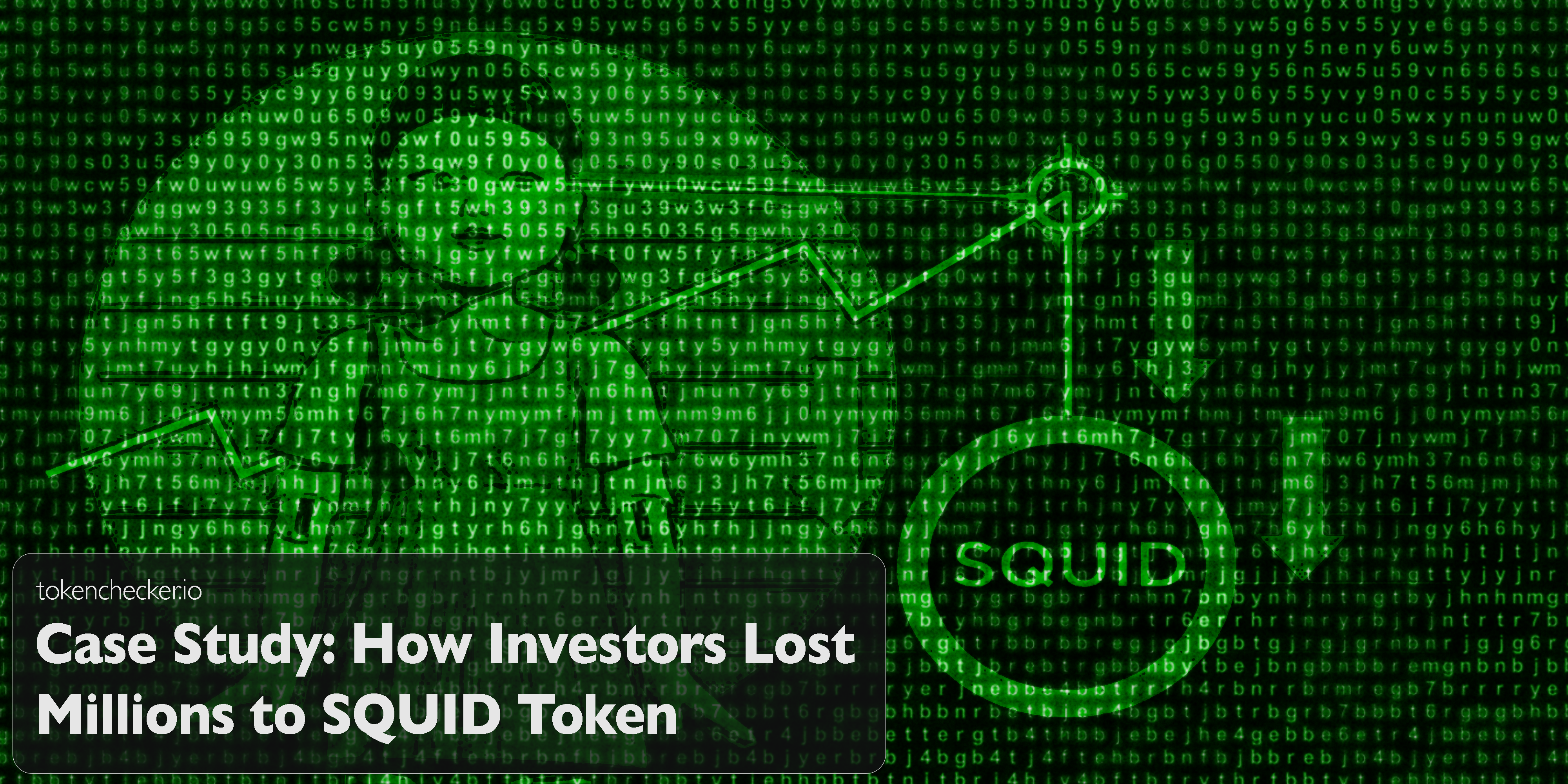
Case Study: How Investors Lost Millions to SQUID Token
Introduction
It started like every viral crypto story does with hype, speed, and FOMO. The $SQUID token launched out of nowhere in late 2021, promising a play-to-earn game inspired by Netflix’s Squid Game. It wasn’t official, but it looked flashy enough. And within days, it rocketed to nearly $3,000.
Then came the crash. The sell button stopped working. The devs disappeared. The website vanished. And millions in value were wiped out. Just like that.
This wasn’t some clumsy rug pull. It was carefully engineered. A mix of pop culture bait, fake promises, and a smart contract that quietly locked everyone in.
The Setup That Fooled Everyone
At a glance, SQUID looked exciting. A crypto token tied to the most-watched show on the planet? Of course people jumped in. There was no official link to Netflix, but the branding felt close enough. They talked about a future game, said players could earn rewards, and showed off a clean website.
None of it was real.
That didn’t stop early buyers. YouTubers, blogs, even some news outlets gave it free promotion. The token price kept climbing. Fast.
The Trap Hidden in the Code
Here’s the part that burned everyone. The SQUID token let people buy it. But it didn’t let them sell.
There was a function in the smart contract that prevented most users from transferring their tokens out. They dressed it up as an "anti-dump mechanism," but it was really just a sell block. A classic honeypot.
And when the price peaked around $2,800? The developers drained all the liquidity. Instant collapse. Holders watched the chart flatline while being completely locked out. By the time people realized what was happening, the funds were already gone.
Why This Scam Was So Effective
It wasn’t just one trick it was a combo.
They hijacked a trending show’s name, told a slick story about a game, and let the hype do the rest. No KYC. No audits. No real docs. But people bought in because it “looked” exciting.
And the contract? That was the real scam. If anyone had checked it or scanned it using a tool like tokenchecker.io they would’ve seen the exit trap. But most people never looked.
Where the Money Went
After pulling the liquidity, the devs didn’t just run. They laundered it smart.
They swapped tokens through multiple chains. Used mixers like Tornado Cash. Converted SQUID to WBNB to ETH. Some funds ended up in low-KYC exchanges, others vanished through lending platforms.
Final estimates range from $3 million to over $12 million, depending on how you count related activity.
The Red Flags Were Always There
Looking back, it’s painfully clear:
- You couldn’t sell the token
- The whitepaper was low effort
- No team names, faces, or social activity
- No liquidity lock
- Dev wallets held most of the supply
- Bot traffic everywhere
- They used Netflix’s branding without permission
But when prices are climbing and people are making 10x in a day, most don’t pause to investigate.
Why It Still Matters Today
SQUID wasn’t just a scam. It was a case study in how fragile trust in DeFi can be. It showed that you don’t need complex exploits to drain millions just a little cultural timing, a locked contract, and a convincing website.
Scammers are still using these tactics. They’ve just gotten smarter about hiding them. Which means investors need to get smarter about spotting them.
If tokenchecker.io Had Been Used...
It would've been a different story. A basic scan would have flagged:
- A honeypot function blocking sells
- No liquidity lock whatsoever
- Token supply concentrated in a few wallets
- Suspicious creator wallet behavior
- Unverified contract code
This is exactly what tokenchecker.io is built for making scams like SQUID obvious before you even click buy.
Final Thoughts
The SQUID token was never about a game. It was about seeing how far hype could carry a scam before the rug got pulled.
For investors, the lesson is simple: hype doesn’t protect your money. Contracts do. Transparency do. Tools like tokenchecker.io do.
Don’t wait for another SQUID to remind you.